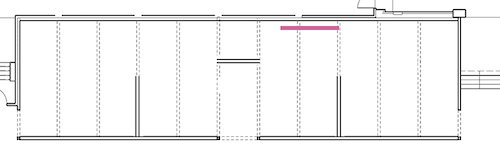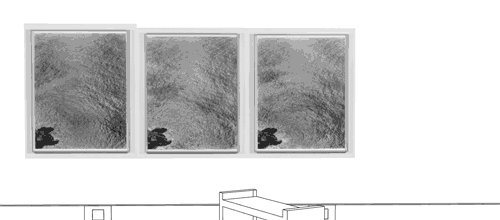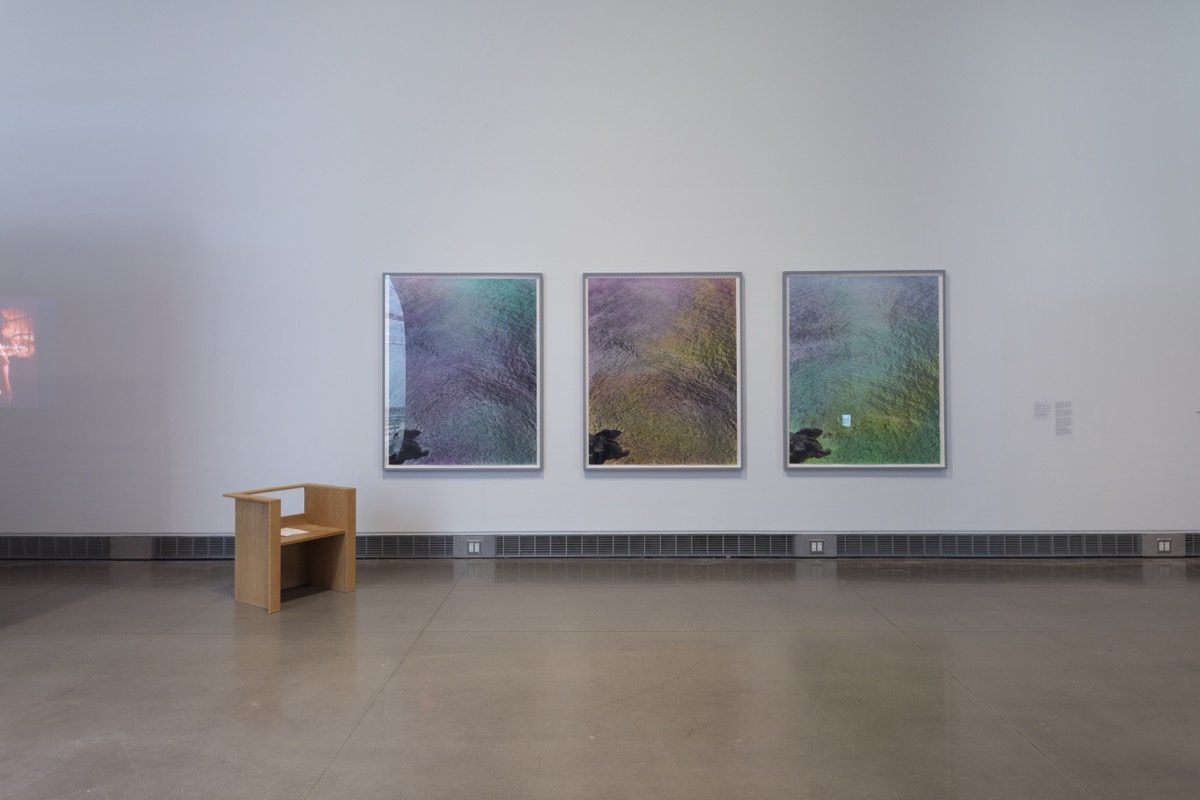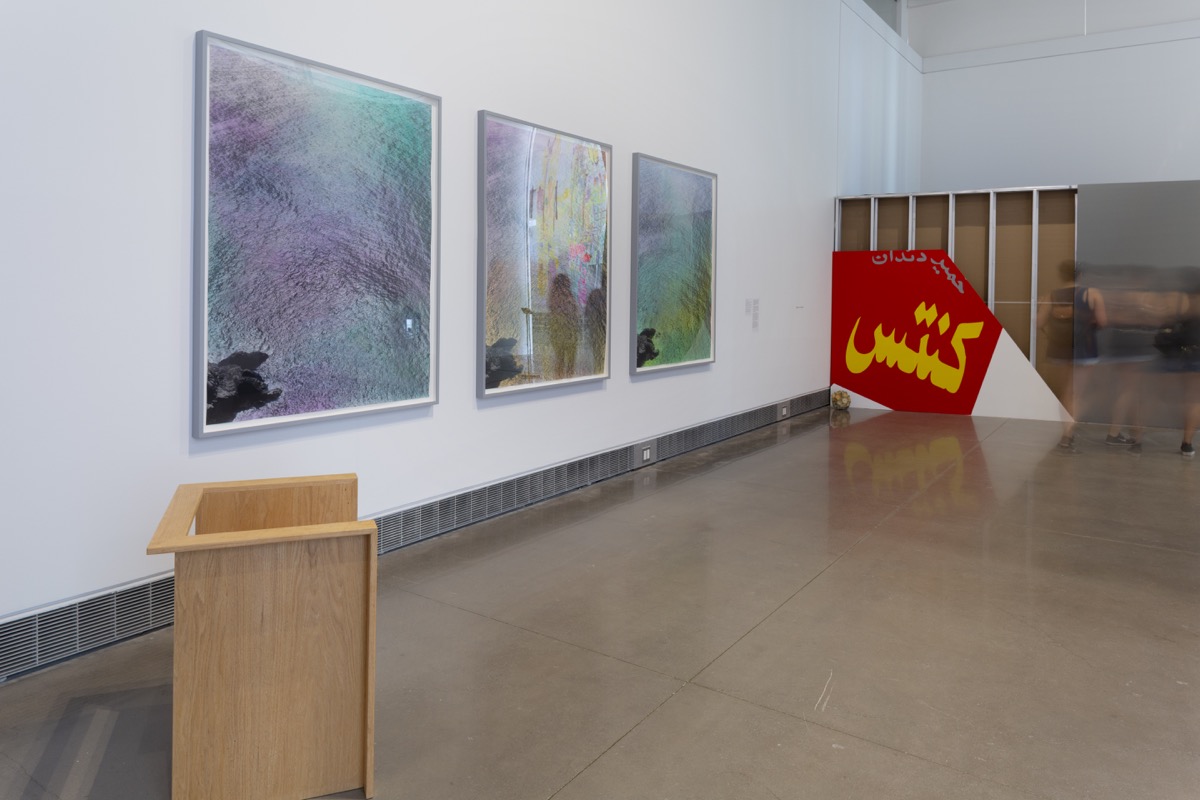| Arthur Ou |  |
||||
 |
After many trips to Point Reyes in Northern California over the last few years, and making photographs at various vantage points along that particular shore, I found one location that was elevated enough for me to tilt the camera down and fill the frame with the expanse of water, without the horizon. I intended to make an oceanic "ground" for the hand-pigment tinting process that I had in mind, which was inspired by the color field paintings of Helen Frankenthaler. The work continues my interest in photographic latency, abstraction, and the possible intersections between photography and painting. | ||||
| You also have a series coming out in book form. How do these two bodies of work intersect? | You also have a series coming out in book form. How do these two bodies of work intersect? | I am currently working on a book of portraits of photographers absorbed in reading Ludwig Wittgenstein's Tractatus Logico-Philosophicus. When I came upon the philosopher’s propositions many years ago I was fascinated by their relevance to photography and photography's relationship to the world. Initially, as an experiment, I substituted the words that recurred most ("world," "fact," and "picture") with the word "photography," and found the ideas were able to in most cases perfectly reorient towards the medium, and in some instances open up new understandings that were very exciting. In this portrait project, which I started in 2015, I am continuing this attempt at connecting photography to Tractatus by having photographers whose work have influenced my own thinking read it. Although the portrait project is different in subject matter from the seascapes, both deal with the ineffable act of contemplation. |
|||
| While I was making these sequential exposures in October of 2016, my mind was filled with confusion and sadness because of what's occurring in the US and the rest of the world politically. The constant shifts and changes in direction of the waves became an analogue to the complex forces at play, and that brought to mind Wittgenstein’s statement: "When we think about the future of the world, we always have in mind its being at the place where it would be if it continued to move as we see it moving now. We do not realize that it moves not in a straight line, but in a curve, and that its direction constantly changes." |  |
||||
| How do you think our relationship to the shape of time has changed with the immediacy of information (in contrast to the latency of photography)? | How do you think our relationship to the shape of time has changed with the immediacy of information (in contrast to the latency of photography)? | The immediacy that has come with current technology has given more poignancy to the notion of latency, since latency is to do with potential, of coming into being, and of something emerging. Perhaps it’s also possible to understand this immediacy as being able to see into the process of becoming in greater detail, as if we were able to see every moment of the process. But of course we are inundated, and are unable to notice when something is finished. | |||
| Your work has a superficial tie to very easy surface link to something like Instagram or Snapchat, in that it’s a record of a fleeting moment, that can later be manipulated with "filters." Do filters allow us to generate an image more true to our perceptual experience? | All cameras already operate like filters, they allow passage of some information yet obstruct others. Software gives a different kind of control. It is less like “filtering” but something more like a rearrangement of what is already there. | Your work has a superficial tie to very easy surface link to something like Instagram or Snapchat, in that it’s a record of a fleeting moment, that can later be manipulated with "filters." Do filters allow us to generate an image more true to our perceptual experience? | |||
| Volume can designate the intensity of sound and also of light, and is the factor in allowing us to experience them. Volume is the phenomenon that allows our bodies to come into contact with the world around us, without the need for physical contact. A photograph is a record made possible by the existing volumes of light. | |||||
| prev | Arthur Ou (b. 1974, Taipei, Taiwan) earned an MFA from Yale University School of Art (2000) and a BFA from Parsons School of Design at The New School (1997). He has exhibited internationally, including solo exhibitions at Brennan and Griffin, New York, (2017, 2015, and 2013) and IT Park Gallery in Taipei, Taiwan (2010, 2005), and in group exhibitions at the Museum of Contemporary Art, Detroit (2017); the Grazer Kunstverein in Graz, Austria (2016); Eleni Koroneou Gallery, Athens, Greece (2016); and the Taipei Fine Arts Museum (2006); among others. He is an associate professor of photography at Parsons School of Design at The New School. He is based in Sunnyside, Queens. | next | |||
| prev | next | ||||

